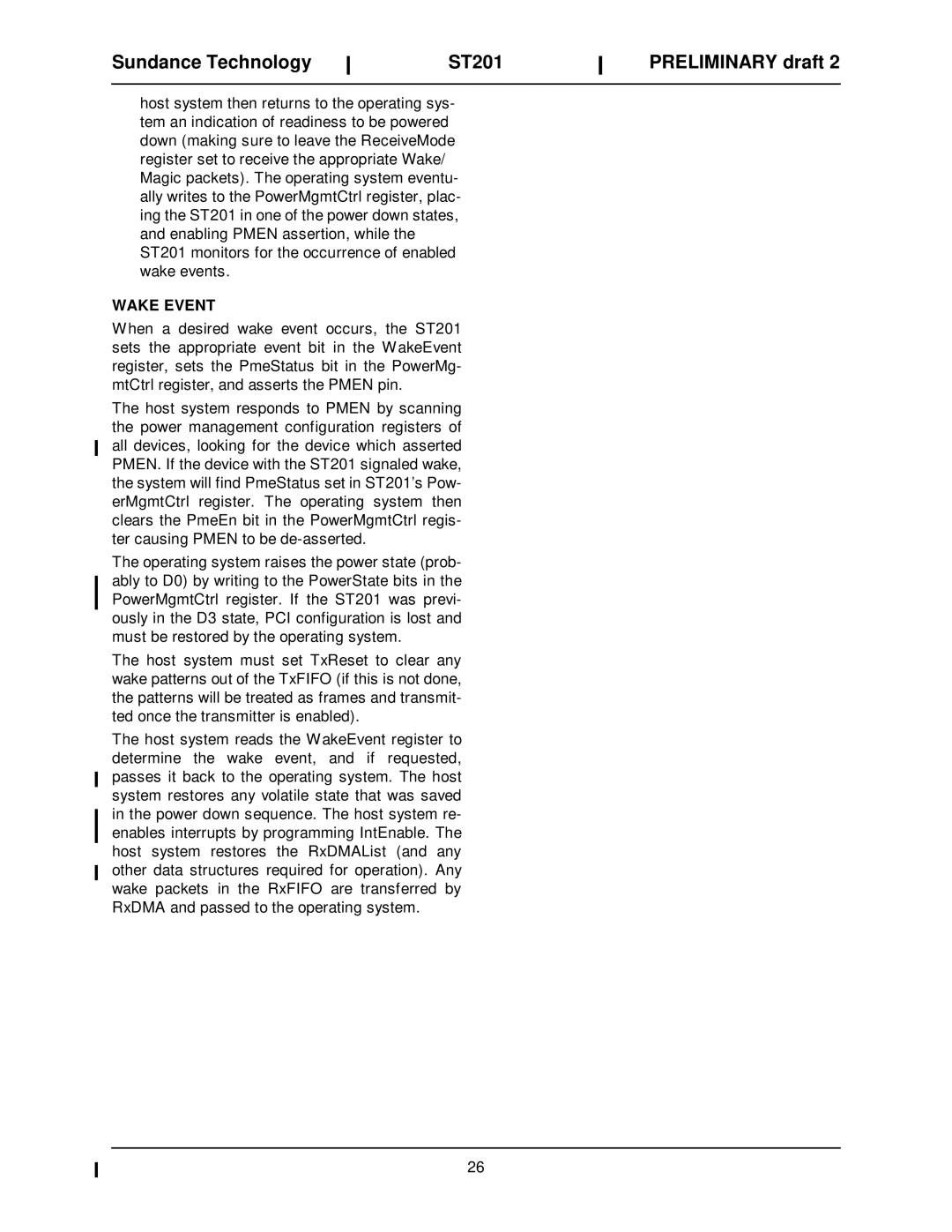
Sundance Technology |
| ST201 |
|
host system then returns to the operating sys- tem an indication of readiness to be powered down (making sure to leave the ReceiveMode register set to receive the appropriate Wake/ Magic packets). The operating system eventu- ally writes to the PowerMgmtCtrl register, plac- ing the ST201 in one of the power down states, and enabling PMEN assertion, while the ST201 monitors for the occurrence of enabled wake events.
WAKE EVENT
When a desired wake event occurs, the ST201 sets the appropriate event bit in the WakeEvent register, sets the PmeStatus bit in the PowerMg- mtCtrl register, and asserts the PMEN pin.
The host system responds to PMEN by scanning the power management configuration registers of all devices, looking for the device which asserted PMEN. If the device with the ST201 signaled wake, the system will find PmeStatus set in ST201’s Pow- erMgmtCtrl register. The operating system then clears the PmeEn bit in the PowerMgmtCtrl regis- ter causing PMEN to be
The operating system raises the power state (prob- ably to D0) by writing to the PowerState bits in the PowerMgmtCtrl register. If the ST201 was previ- ously in the D3 state, PCI configuration is lost and must be restored by the operating system.
The host system must set TxReset to clear any wake patterns out of the TxFIFO (if this is not done, the patterns will be treated as frames and transmit- ted once the transmitter is enabled).
The host system reads the WakeEvent register to determine the wake event, and if requested, passes it back to the operating system. The host system restores any volatile state that was saved in the power down sequence. The host system re- enables interrupts by programming IntEnable. The host system restores the RxDMAList (and any other data structures required for operation). Any wake packets in the RxFIFO are transferred by RxDMA and passed to the operating system.
PRELIMINARY draft 2
26
